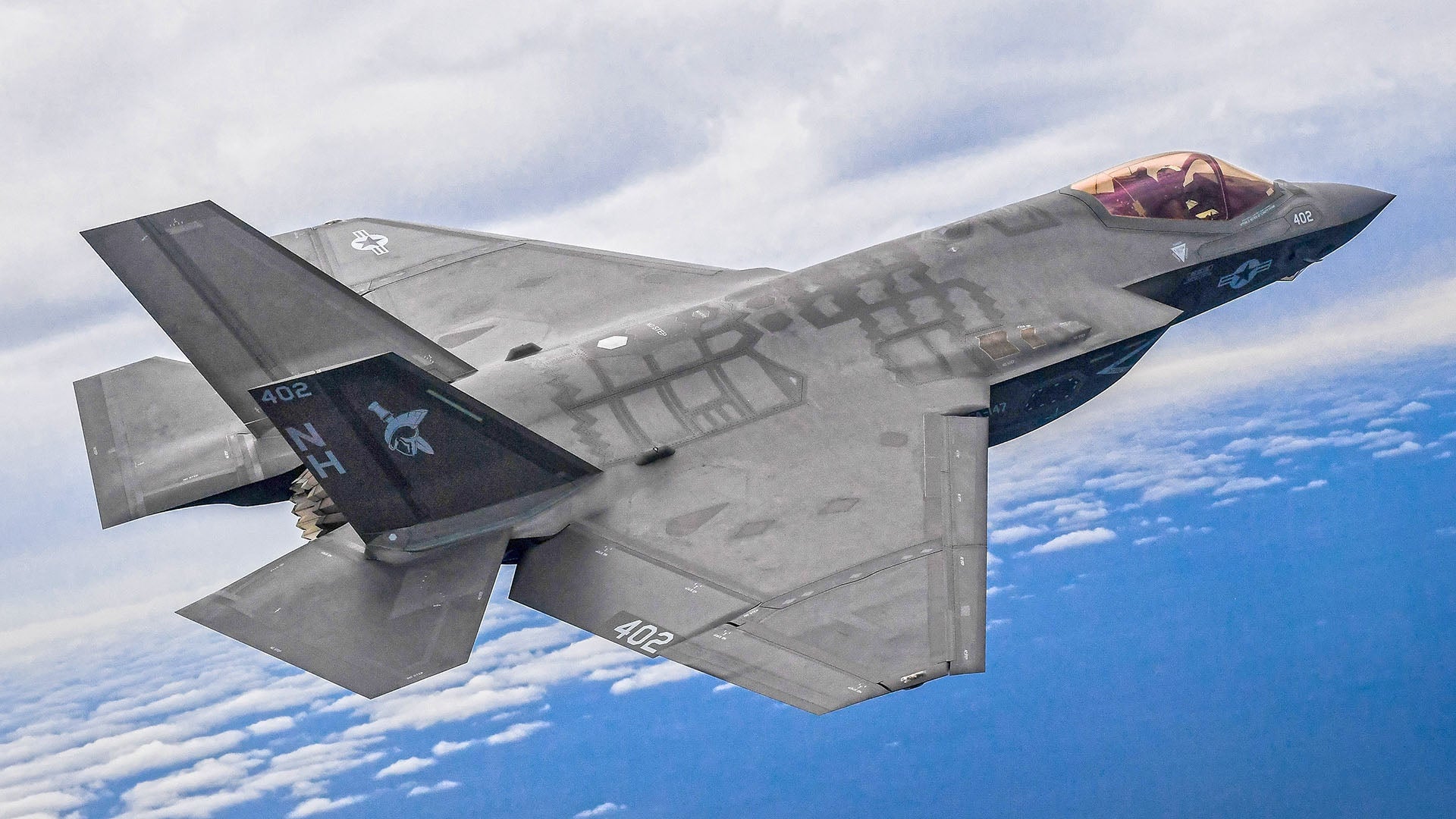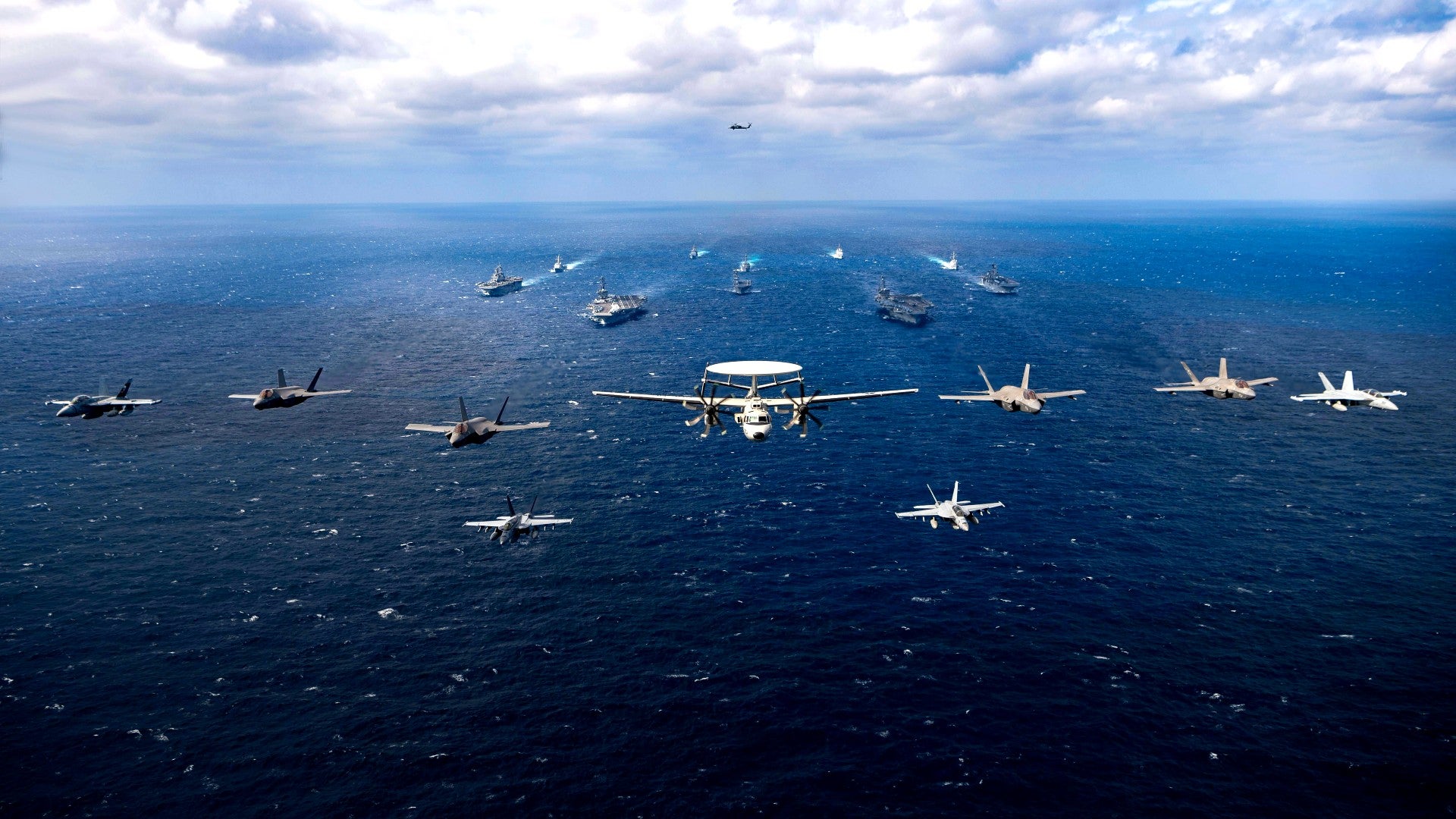The U.S. Navy has confirmed the authenticity of a video showing the final moments leading up to one of its F-35C stealth fighters being involved in a mishap while landing aboard the aircraft carrier USS Carl Vinson, while operating in the South China Sea, earlier this week. While it’s not clear who filmed the clip and how it was leaked, Navy spokesperson Lt. Mark Langford told
Newsweek that it was “taken on board” USS Carl Vinson and does indeed show the mishap jet. You can read our original reporting on the event here.
In the 18-second video, which began to circulate widely on social media channels late yesterday, the F-35C is seen approaching the carrier as the ship itself completes a turn. The camera’s viewpoint appears to be from near the Mk38 chaingun’s location on the starboard side of the ship’s stern. The F-35C sets up on a short final and makes its approach when we hear it add power and see its flight control surfaces flutter just before passing over the stern of the ship. A thump-like sound can be heard and smoke quickly emerges from the flight deck. Whether this was from the aircraft impacting the deck or an ejection, or both, remains unclear at this time.
Video of a Navy F/A-18 making a typical landing on a carrier, filmed from the fantail:

An investigation into the incident is ongoing, but Lt. Nicholas Lingo, a spokesperson for the U.S. Seventh Fleet, confirmed that the F-35C “impacted the flight deck during landing.”

The pilot ejected safely from the jet, but was among seven sailors that received injuries due to the mishap. Thankfully, all are now said to be in a stable condition or have recovered. Earlier statements from the Navy noted that four of those injured received treatment aboard the Carl Vinson while the pilot and two other sailors were evacuated to a medical facility in Manila in the Philippines.
Assigned to Strike Fighter Squadron 147 (VFA-147), the “Argonauts,” the F-35C had been taking part in a second day of naval maneuvers involving two Nimitz class aircraft carriers, the Carl Vinson and USS Abraham Lincoln, in the disputed South China Sea.

The video had been preceded by a photo purporting to show the F-35C in the water, although the authenticity of this image remains the subject of some debate. Appearing widely on social media, the photo apparently shows an F-35C floating in the water with the cockpit empty and debris floating nearby.
However, separate spokespeople at the Seventh Fleet and the Pacific Fleet have provided The War Zone with statements saying they are unable to confirm the authenticity of the photo. This is especially interesting considering that the Navy has confirmed the legitimacy of the video.
Meanwhile, efforts are now underway to salvage the jet from the floor of the South China Sea. As was the case with the British F-35B that was lost after a failed takeoff attempt during carrier operations in the Mediterranean last November, it’s certain that the U.S. military is keeping a close eye on the general area of the incident to ensure that no foreign nations attempt to locate or interfere with the jet.
This last factor is especially relevant since it could reportedly take as long as 10 days before a U.S. salvage ship is on the scene. The fact that this happened in the South China Sea, where China has a huge concentration of naval capabilities, is also troubling.
“We’re certainly mindful of the value of an F-35 in every respect of what value means,” said Pentagon spokesman John Kirby. “And as we continue to attempt recovery of the aircraft we’re going to do it obviously with safety foremost in mind, but clearly our own national security interests. And I think I will just leave it at that.”
China or even Russia would have every reason to attempt to retrieve at least parts of the stricken F-35. Such an operation could result in an intelligence-gathering windfall and help improve their own technological capabilities and their ability to counter the F-35 as a threat. Regardless, the incident has at least provided Beijing with a propaganda windfall. After all, the Vinson was taking part in a cruise intended to challenge China’s extensive claims on the South China Sea and to defend international freedom of navigation. These kinds of missions in this area have been slammed by Chinese officials in the past.
A spokesman from the foreign ministry in Beijing, Zhao Lijian, said the Chinese government had no plans to try and locate the F-35C. “I noted relevant reports. This is not the first time that the U.S. has had an accident in the South China Sea,” he said.
“We have no interest in their aircraft. We urge the country concerned to do things that are conducive to regional peace and stability, rather than flex muscles in the region.”
At this stage, it’s not clear how deep the F-35C might have sunk, or what kinds of equipment may be required to locate it and bring it to the surface. Some of the different options involved in this kind of deep-water recovery are explored in this previous article.
This is, however, not the first time that a Joint Strike Fighter has crashed in the sea and attempts have been made to recover it.
The aforementioned British F-35B was recovered from the Mediterranean seabed a few weeks after the incident, with U.S. assistance.
Before that, in April 2019, a land-based F-35A of the Japan Air-Self-Defense Force crashed into the Pacific, killing the pilot.
After two months, the wreckage of the Japanese jet and the remains of the pilot were found. The jet’s flight data recorder was recovered but found to be damaged beyond use, and most of the jet remains submerged, as far as is known, at a secret location. However, some debris from the jet was noted floating near where the crash site. One of the aircraft’s tails was retrieved from the water by Japanese searchers not long after the crash. In that case, the aircraft hit the water at a very high-speed, likely doing major damage to the aircraft if not breaking it apart entirely. The crashed F-35C, like the recent loss of the F-35B, would have been moving extremely slow when it went into the water, likely keeping the majority of the aircraft intact.
Although a leaked video was unlikely to be part of the plan, more details are now being revealed about the F-35C incident and we will keep you informed of any other major developments as they emerge.
Update 3:50 PM EST:
The Navy has now confirmed to The War Zone that the picture that has been circulating online purportedly showing the F-35C in the South China Sea following this mishap is authentic.
“The ship has assessed that the video and photo covered in the media yesterday were taken onboard USS Carl Vinson (CVN 70) during the crash,” Cdr. Hayley Sims, a spokesperson for the U.S. Seventh Fleet, said in a statement. “There is an ongoing investigation of the incident.”
“[The] U.S. Navy is making recovery operations arrangements for the F-35C aircraft involved in the crash aboard USS Carl Vinson (CVN 70) in the South China Sea, Jan. 24,” Sims added.
Contact the author: thomas@thedrive.com
